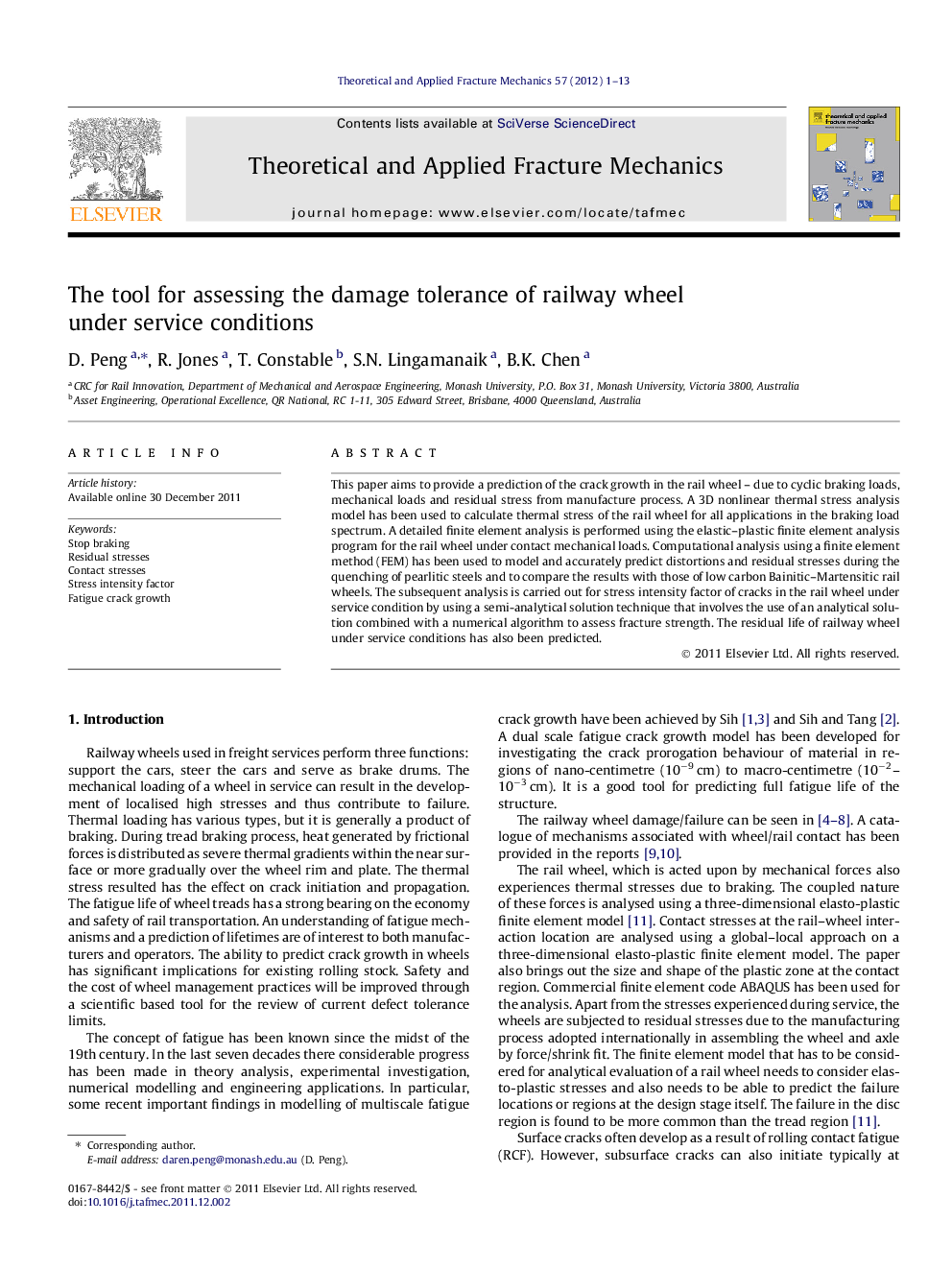| Article ID | Journal | Published Year | Pages | File Type |
|---|---|---|---|---|
| 808066 | Theoretical and Applied Fracture Mechanics | 2012 | 13 Pages |
This paper aims to provide a prediction of the crack growth in the rail wheel – due to cyclic braking loads, mechanical loads and residual stress from manufacture process. A 3D nonlinear thermal stress analysis model has been used to calculate thermal stress of the rail wheel for all applications in the braking load spectrum. A detailed finite element analysis is performed using the elastic–plastic finite element analysis program for the rail wheel under contact mechanical loads. Computational analysis using a finite element method (FEM) has been used to model and accurately predict distortions and residual stresses during the quenching of pearlitic steels and to compare the results with those of low carbon Bainitic–Martensitic rail wheels. The subsequent analysis is carried out for stress intensity factor of cracks in the rail wheel under service condition by using a semi-analytical solution technique that involves the use of an analytical solution combined with a numerical algorithm to assess fracture strength. The residual life of railway wheel under service conditions has also been predicted.
